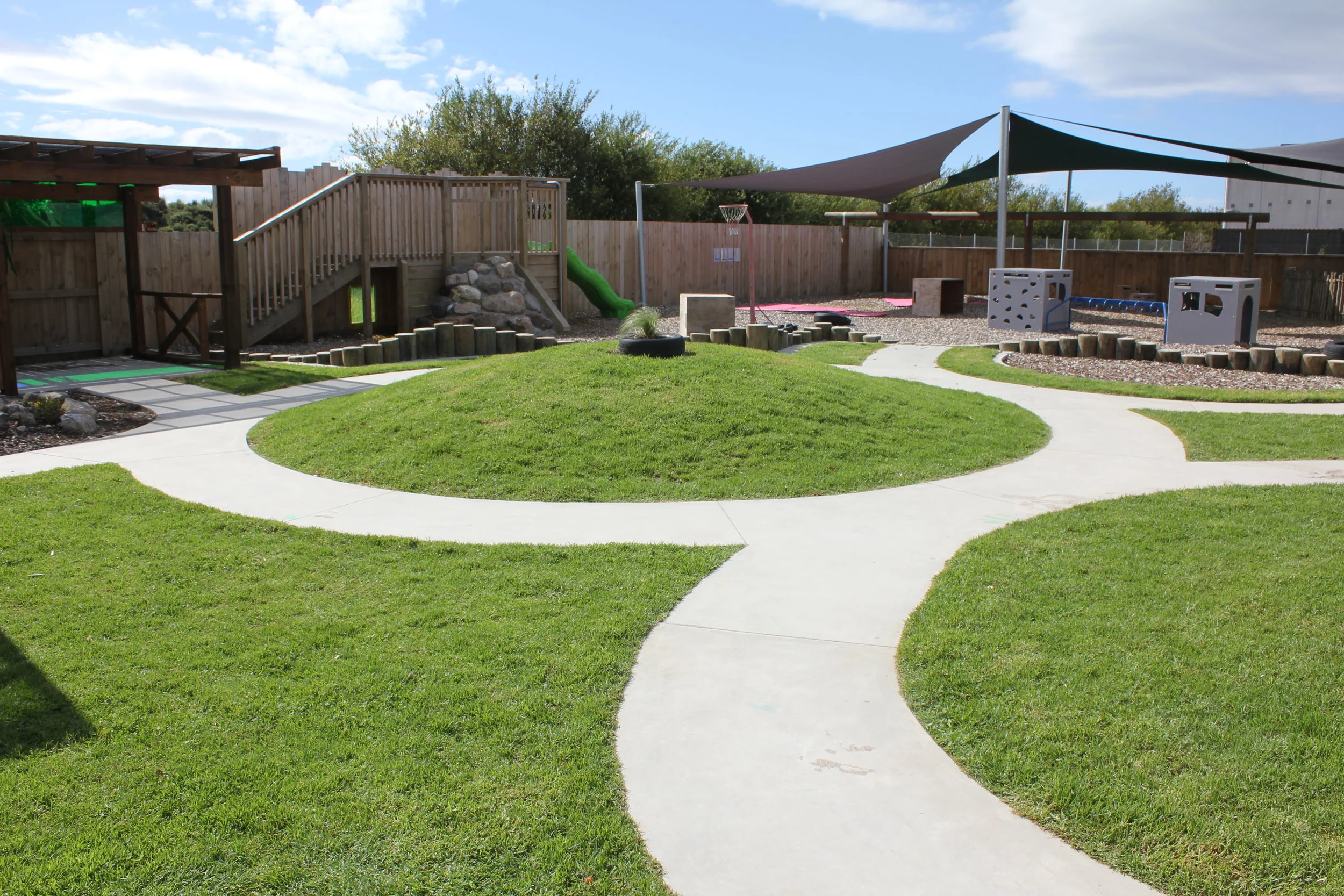Reigniting a pride of place for Maori and their lands
Rangitahi Kawe is a 27 year old landscape architect at Earthart Landscaping in Whakatane. Tauranga is his turangawaewae, where he was born and raised. His marae is Hairini, his hapu is Ngai te Ahi and he affiliates to the tribe of Ngati Ranginui. As a Maori he hopes that his culture, knowledge and skills will assist the profession in enhancing its connection between people and the unique landscapes of Aotearoa. “I wish to establish a cultural relationship between people, land and landscape architecture,” he says. “I want to recognise that having a strong understanding of tikanga Maori, landscape architecture can reignite pride of place for Maori and their lands.” He and Earthart completed work on Grow Early Childcare Centre in Papamoa in May last year.
LAA: What was your brief?
RK: To create an exciting and creative playground that reflects the historical environment of Tauranga Moana. The design would propose that hauora (health and wellbeing) and educational outcomes of our country’s tamariki could be improved with a new approach to designing the outdoor environments of their place of learning.
LAA: What were you setting out to achieve?
RK: To better connect children to nature by providing beautiful natural spaces and gardens. To
increase creative play by providing separate, diverse and connected spaces catering to a range of the senses, providing opportunities for riskier and enriched play-based learning and teaching. To identify mana whenua by connecting children to their rohe through clear references and connections to Te Ao Māori in all aspects of design, thereby also improving practice of culturally responsive and relational pedagogies and use of Māori themes in teaching.
LAA: What was the design philosophy?
RK: Frank Lloyd Wright coined the phrase “form and function are one”. I would be considered the form where I focus on creating organically integrated designs that flow easily from one space to the next. Brett Taylor my colleague and business director is a practical and logical designer having emphasis on spatial awareness. I feel the design was successful because both our designers strengths worked well by reflecting and connecting the environment around the site.
LAA: Where did you draw inspiration from?
RK: The design for Grow is inspired by local legends of Tauranga Moana, one in particular is the legend of Mangatawa. Long ago a whale and her baby entered the Tauranga Harbour passing Mauao (Mt Maunganui) and Te Moutere o Matakana (Matakana Island). As they entered the harbour, they swam further into the inlet, passing Matapihi heading towards Maungatapu. They felt the tide getting shallower and decided to return to deeper waters. Unfortunately they became disorientated instead of swimming towards the entrance they turned into Te Tahuna o Rangataua (Rangataua Inlet) an arm of the harbour between Matapihi and Maungatapu.
While trying to find their way back to the open sea, the outgoing tide held them where they could hear the sound of the waves on the beach of Omanu and Papamoa. During their struggle over the mudflats of Rangataua they came across a magical spring at ‘Karikari’ . Drinking from it would turn them into stone and suddenly all life would depart from them. The father whale came looking for his family and saw they had been turned to stone. The sight of the mother whale with the baby whale beside her was difficult for him to see, so he too drank from the spring and became fixed behind them both.
The three whales are prominent hills of Papamoa where the father is known as Kopukairoa, the mother whale, Mangatawa lies at the southern end of the Ranagataua inlet, with the baby whale, Hikurangi nestled beside her. The spring is located near the base of Mangatawa where the water flowing from it is quite white, and it is said to be the milk of the mother whale or Te Waiu o te tohora. These three maunga can be best viewed from Maungatapu or Matapihi.
LAA: How did you keep within budget and completed on time?
RK: We involved people of the community for volunteer work and our more experienced contractors took the role of being teachers for a day sharing their knowledge and skills.
LAA: What sorts of materials did you use and what was the significance of them?
RK: We added paua shell in the mixing process of concrete to reflect the coastal environment of the area. We used real rocks for the climbing wall in the fort that reflected the coastal environment as well.
The Perspex seen in the walls of the carpentry area was used because when the sun would shine through this material it would brighten this area with lively colours giving a rainbow effect enhancing the sensory feelings of the children.
LAA: What are you most proud of?
RK: I’m most proud to be representing my whanau in a profession that Maori are hardly recognised in. I get to express my cultural side in most of my designs and in return I get appreciation from clients and colleagues for sharing a different perspective to landscape design.




